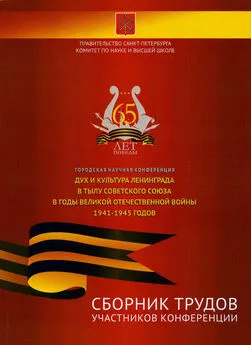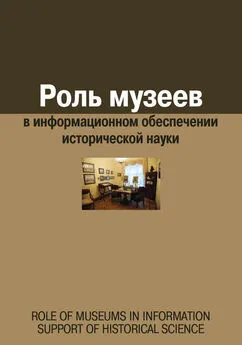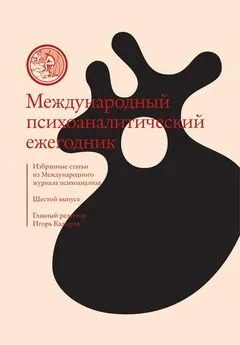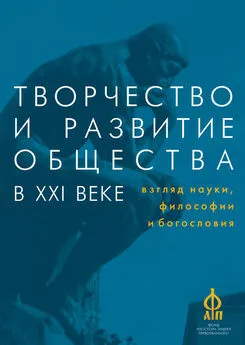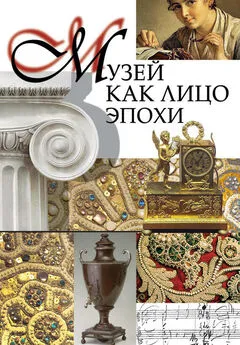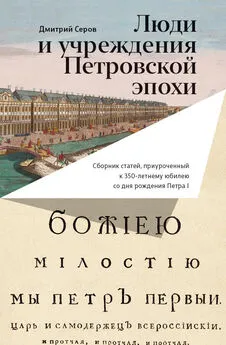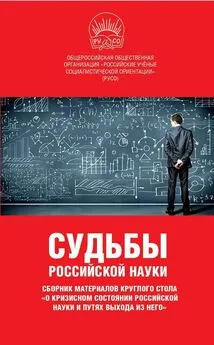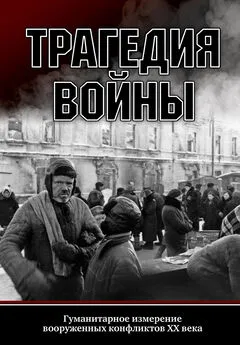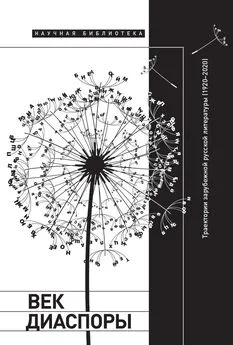Array Сборник статей - Нации и этничность в гуманитарных науках. Этнические, протонациональные и национальные нарративы. Формирование и репрезентация
- Название:Нации и этничность в гуманитарных науках. Этнические, протонациональные и национальные нарративы. Формирование и репрезентация
- Автор:
- Жанр:
- Издательство:Литагент Алетейя
- Год:2017
- Город:Санкт-Петербург
- ISBN:978-5-906860-98-9
- Рейтинг:
- Избранное:Добавить в избранное
-
Отзывы:
-
Ваша оценка:
Array Сборник статей - Нации и этничность в гуманитарных науках. Этнические, протонациональные и национальные нарративы. Формирование и репрезентация краткое содержание
Для историков, политологов, социологов, филологов и культурологов, а также интересующихся проблемами этничности и национализма.
Нации и этничность в гуманитарных науках. Этнические, протонациональные и национальные нарративы. Формирование и репрезентация - читать онлайн бесплатно ознакомительный отрывок
Интервал:
Закладка:
German, Roman and Frankish: the national narratives of the early Hohenstaufen era (1138–1190) and their Influence on high Politics
Vedran Sulovsky
Shortly after the end of the investiture controversy, Henry V (1106–1125), the last emperor of the Salian dynasty, died childless. While Lothair III of Supplingenburg (1125–1137) succeeded him at first, at his death it was Conrad III of Hohenstaufen (1138–1152), who was elected king. His position was very weak: Saxony and Bavaria were his open enemies, while Italy fell into complete disarray. The new ruler desperately needed to boost his legitimacy, but he never really achieved this. It is difficult to tell how Conrad would have portrayed himself as a legitimate ruler, as no source commissioned by him remains. However, Otto of Freising s Chronica sive historia de duabus civitatibus, written in 1146 was revised in 1153 in order to be presented to Frederick Barbarossa (1152–1190), Conrad’s nephew and heir. However, only a small part of the text was actually revised. Otto of Freising, who was a close relative to the Hohenstaufen, apparently believed in the same 'national’ narrative as the Hohenstaufen, as other sources from the court of Frederick I prove.
Otto’s view of world history is a complicated one. First of all, he conceives the Roman Empire as the last of the four empires as prophesized by Daniel, after whose end the world itself should end. The empire, however, migrated from one people to another for quite some time, having gone from the Romans to the Greeks, then to the Franks, who then lost it to the Langobards, who, in turn, lost it to the Franci Teutonici, the German Franks. During this migration the Roman Empire grew weak [39] Otto of Freising. Chronica sive historia de duabus civitatibus, ed. A. Hofmeister, MGH SRG in usum scholarum separatim editi 45. Hannover, 1912. P. 6–9.
. Both the Western, that is, Latin, Franks and the German Franks were descendants of the Trojans, who, upon escaping the burning city of lilium, split into two groups: while the future Romans followed Aeneas on his way to Latium, the future Franks went to Scythia and called themselves the Sicambri [40] Ibid. P. 56–57.
. Interestingly, Otto describes the rise of the
Roman Empire as well as the history of the Franks [41] Otto of Freising, Chronica sivé historia… P. 65–67 et passim.
. In fact, the history of the impérium itself takes pride on the place in his History of the Two Cities , whose title refers to the Church and the Empire, which are called the civitas Dei and the civitas terrena , respectively [42] Ibid. P. 99–100.
. Christ’s birth during the times of Augustus (27 BC-14 AD) was described by Otto as the will of God, who wanted to make Rome the seat of the Church [43] Ibid. P. 141–143.
.
To Otto, the key moment of world history was the reign of Constantine the Great (306–337), who Christianized the Roman Empire and united the civitas Dei and civitas terrena into the civitas permixta. However, Constantine moved the impérium to Constantinople and gave it to the Greeks. Whether Constantine gave the western part of the empire to Pope Sylvester I or not, Otto does not decide, but leaves it to the reader [44] Ibid. P. 180–192.
. The fall of Rome is a dramatic episode in Otto’s chronicle, followed a row of tyrannies in Italy until Justinian’s reconquest of it for the Romans [45] Ibid. P. 218–237.
. From then on the chronicle traces the history of the Franks until Charlemagne renovated the Roman Empire under the Franks, finally transferring it away from Constantinople [46] Ibid. P. 244–258.
. It is at this precise point that the two Trojan lines, the Roman and the Frankish, finally converge. After the Carolingians lost control of the empire, Henry I (919–936) was elected king of Eastern Francia. For Otto of Freising this was the key moment in the history of his country, the Roman Empire, as it was disputed whether Henry I continued the regnum Francorum or started a regnum Teutonicorum. Otto solves the problem by stating that the regnum Teutonicorum, which held the impérium Romanům in his own day, was a part of the regnum Francorum. Finally, the impérium Romanům was conquered by Otto the Great from the Langobards in 962 [47] Ibid. P. 262–285.
.
However, the problem of the Hohenstaufen Frankish ideology was that the Ottomans (919-1024) were a Saxon dynasty. In order to solve this problem, it was stated that Conrad II’s (1024–1038) wife, Gisela, was a descendant of Charlemagne, and therefore the throne ofGermany would return to the Franks under her descendants [48] Otto of Freising. Chronica sivé historia… P. 290–291.
. This version of history was the official one in the 1150s, when Otto of Freising started writing the Gesta Friderici I. imperatoris in 1156, and which his chaplain Rahewin continued up to 1160 [49] C. Mierow (ed. and trans.). The Deeds of Frederick Barbarossa. New York, 1966. P. 3–4.
. However, as this was a work of contemporary history, there are fewer ideological elements in it. Yet the main elements of the ideology are still present as both Otto and Rahewin invent Frederick Barbarossa’s speeches on his Italian campaigns. The speeches show several important elements of the identity of Barbarossa’s court:
l) they considered themselves Eastern Franks and Germans, 2) Charlemagne conquered the impérium from the Langobards for the West Franks, while Otto the Great conquered it again from the Langobards for the East Franks [50] Otto of Freising. ‘Ottonis Gesta Friderici I. imperatoris’, in Georg Waitz and Bernhard von Simson (eds.), MGH SRG in usum scholarum separatim editi 46, Ottonis et Rahewini Gesta Friderici I. imperatori. Hannover, 1912. P. 1–161, atp. 136–139; Rahewin of Freising. ‘Rahewini Gesta Friderici I. imperatoris’, in Georg Waitz and Bernhard von Simson (eds.), MGH SRG in usum scholarum separatim editi 46. Ottonis et Rahewini. Gesta Friderici I. imperatoris. Hannover, 1912. P. 162–346, at p. 202–204.
. While the political character of Frederick’s speeches and his goal to reestablish imperial rule in Italy is obvious, his source of legitimacy, the legacy of the Franks, was fervently denied by the Senate of Rome, which claimed that only the city of Rome may bestow the impérium Romanům upon a person, and that not even the pope could do so [51] Otto of Freising. ‘Gesta Friderici’. P. 44–47,135–139.
. The papacy and many Italian authors, however, believed that the impérium was the pope’s to give [52] Rahewin of Freising. ‘Gesta Friderici’. P. 172–179.
. Even pro-Hohenstaufen authors such as Otto Mořena [53] Otto Mořena. ‘Ottonis Morenae eiusdemque continuatorum Libellus de rebus a Frederico imperatore gestis’, in F.-J. Schmale (ed. and trans.), Italische Quellen iiber die Taten Kaiser Friedrichs I. in Italien und der Brief iiber den Kreuzzug Kaiser Friedrichs I. Darmstadt, 1986. P. 34–239, at s. 60–62.
and the anonymous author of the Carmen de gestis Friderici I. in Lombardia held this view [54] Anonymus. Carmen de gestis Frederici I. imperatoris in Lombardia, ed. I. Schmale-Ott, MGH SRG 62. Hannover, 1965. P. 3, 23.
. Frederick and his court, on the other hand, had a different view: the emperor was crowned by God while the pope was merely the physical instance through which God operated [55] Rahewin of Freising. ‘Gesta Friderici’. P. 187–188.
, just like God anointed David through his agent, the prophet Samuel [56] Godfrey of Viterbo. ‘Pantheon’, in Georg Heinrich Pertz and Georg Waitz (eds.), MGH SS 22, Historici Germaniae saec. XII, 2. Hannover, 1872. P. 107–307, atp. 221–222.
.
The question is: what was at stake for both Conrad III and Frederick I? While the first could not force his opposition in Germany to submit, Frederick had practically no opposition there except in the 1180s. What they had in common was the plan to restore imperial rule over Italy and conquer the Kingdom of Sicily while giving out as few concessions to the papacy and the Byzantine Empire as possible [57] /. Dendorfer. ‘Konrad III. und Byzanz’, in K.-H. Ruefi (ed.), Die Staufer und Byzanz. Góppingen, 2013. P. 58–73, at p. 68–69; K. Gorich. ‘Friedrich Barbarossa und Byzanz’, in K.-H. Ruefi (ed.), Die Staufer und Byzanz. Góppingen, 2013. P. 74–85, at p. 75.
. Both Conrad III and Frederick I were elected as kings when another candidate was the legal heir of the previous ruler: Conrad succeeded Lothair III instead of his son-in-law Henry X of Bavaria, and Frederick succeeded Conrad III instead of Conrad’s seven-year-old son Frederick [58] K. Gorich. Friedrich Barbarossa: Eine Biographie. Munich, 2011. P. 56, 90-110.
. However, there is a difference between the two Hohenstaufen. While Conrad III died never having achieved unity in the empire, Frederick’s catastrophic Italian campaign of 1166–1168 produced unexpected results: half his court had died of the plague, including his young cousin, Frederick of Rothenburg. Barbarossa was now free to crown his own son, Henry VI, junior king in 1169 [59] Ibid. P. 418–424.
.
This change is reflected in the works of Godfrey of Viterbo, which contains a narrative revised for the different situation of the 1180s. Godfrey’s position as tutor to Henry VI makes his work even more interesting, as most of his works were apparently written for the education of the young king [60] F. Hausmann. ‘Gottfried von Viterbo: Kapellan und Notar, Magister, Geschichtsschreiber und Dichter’, in A. Haverkamp (ed.), Friedrich Barbarossa. Handlungsspielráume und Wirkungsweisen des staufischen Kaisers. Sigmaringen, 1992. P. 603–621, atp. 605-68, 614–615.
. A noticeable change in the narrative is that while Otto of Freising praised the elective principle of the imperial succession in the 1150s [61] Otto of Freising. ‘Gesta Friderici’. P. 103.
, already Godfrey of Viterbo’s first work, the Speculum regum , instructed Henry VI to look up to his ancestors, including Nimrod, whom God himself gave royal power, Jupiter, who was the first man to call himself a god, and Augustus, who founded the Roman Empire and almost proclaimed himself a god, but then had a vision of the Mother of God with Child [62] Godfrey of Viterbo. ‘Speculum regum’, in Georg Heinrich Pertz and Georg Waitz (edd.), MGH SS 22, Historici Germaniae saec. XII, 2. Hannover, 1872. S. 21–93, at p. 68–69.
. The Speculum's story of Constantine the Great is a different case altogether: Henry VI is taught that Constantine was a base foreigner who robbed Rome of her impérium and gave it to the Greculi [63] Ibid. P. 80–81; Godfrey of Viterbo. ‘Pantheon’. P. 175.
. Moreover, he was an Arian heretic who introduced heresy to the whole world. Godfrey’s later works, including all the versions of the Pantheon , describe Constantine in line with Otto of Freising s Chronica [64] Godfrey of Viterbo. ‘Pantheon’. P. 175–177.
.
Godfrey’s history of the Franks is an even more ideologically biased. In one version, Clovis was baptized even before Constantine the Great was. Clovis was, therefore, more virtuous and beloved of God, just like his people, the Franks, were [65] Ibid. P. 156–157.
. In Godfrey’s other versions of Frankish history a more realistic chronology is observed [66] Ibid. P. 201–202.
. The Carolingian overthrow of the Merovingians is portrayed as a natural development of a people who could not bear feeble rulers [67] Godfrey of Viterbo. ‘Speculum regum’, p. 90–91; Godfrey of Viterbo, ‘Pantheon’. P. 205.
. Godfrey retells the legend of Charlemagne, the main character in all of his works, differently each time. However, aside from the references to David’s anointment during Charlemagne’s coronation by God, the most striking element found in Godfrey’s works is the reworked genealogy of Charlemagne. His father remains Pepin the Short (751–758), who is described as a Frank, but his mother Bertrada becomes Berta, the granddaughter of Emperor Heraclius (610–641). As Godfrey states, Charlemagne united the two Trojan lineages, the Frankish and the Roman-Greek, into one, thereby becoming the rightful ruler of the impérium Romanům [68] Godfrey of Viterbo. ‘Pantheon’. P. 206–207.
. The rest of Godfrey’s Frankish and German history follows Otto of Freising’s model [69] Ibid. P. 225.
.
Интервал:
Закладка:

